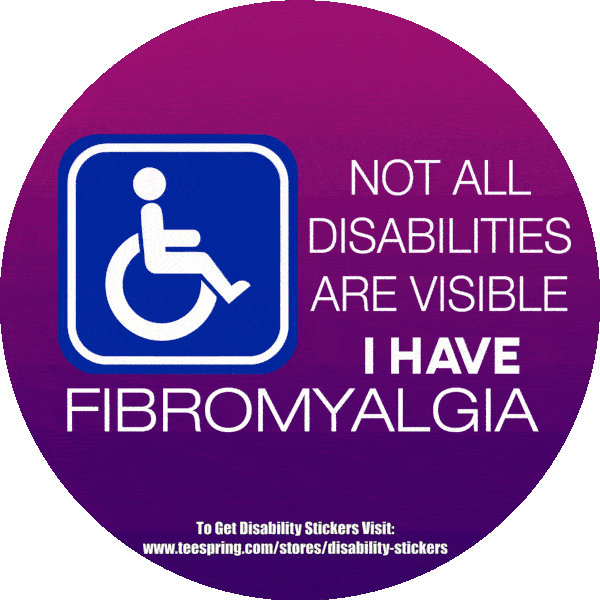Noise isn’t always about what’s going on around you sometimes it’s about what’s going on inside. Not all noise is bad. Sometimes the ticking clock or the hum of the dehumidifier can create more frustration, distraction or pain than the noise of TV or the radio.
Occasionally one person’s noise can be the sound that comforts someone else pain. Silencing that noise is an important part of dealing with pain so that you can move forward, cope better, and be stronger. Fibromyalgia (FM) is a syndrome involving diffuse body pain with associations of fatigue, sleep disturbance, cognitive changes, mood disturbance and other variable somatic symptoms.
Pain is the primary complaint in patients with FM. Fatigue is the most common associated complain. Mood disorders, including depression and anxiety, are present in up to three-quarters of patients with FM. Abnormalities in pain processing have been identified at various levels in the peripheral, central and sympathetic nervous systems, as well as the hypothalamus-pituitary-adrenal axis stress-response system.
Documented abnormalities include evidence of peripheral sensitization and wind-up phenomenon, central sensitization with changes in functional magnetic resonance imaging and single-photon emission computed tomography scans of the brain, increased levels of substance P in the cerebrospinal fluid and impairment of descending noxious inhibitory control.
Sound sensitivity in Fibromyalgia
We don’t know the causes of light and noise sensitivity, but they’re often called “generalized hyper vigilance.” That means our bodies are constantly on high alert. It’s also a symptom of post-traumatic stress disorder. Hyper vigilance is beneficial for people in potentially dangerous situations, such as soldiers or police officers, because it speeds up several processes and helps with crisis response.
Almost to a person, nearly every suffer of FM reports sensitivity to noise. Not just loud noises either. Even though those appear to be the most horrible it is also abrupt noises like how the commercials on TV abruptly jump up the volume or definite kinds of sounds, ticking, boring or other recurring noises. But no matter what the source of the sound, nearly all FMers report intolerance to it, often to the point of literally, pain.
Noise sensitivity can have a enormous effect on your life. You may avoid certain situations and even fear them, which increases anxiety. It can also contribute to social isolation, which is common in people with FMS or ME/CFS, and can worsen depression.
The body seems to act in response to sounds as if they were a physical mug. ”Most people have what’s called an inhibitory response to repeated sensations. That means, once they’ve felt something and their brains have determined it’s not a threat, the response to it gets progressively weaker.
Those of us with Fibromyalgia don’t get to tune out these “Undamaging” feelings. Instead, our nerves over-react to them, sending more and more pain signals at every contact and instead of filtering those signals out like it should, our brains seize hold of them and crank up the volume. Which means that a recurring assault of noise, for us means that we feel like we are getting punch on the head, over and over?
The brain does not filter them out as it would for a “healthy” person. It is similar to what happens to a person who gets hearing aids for the first time, all the sounds are at the same level and the person has to re-learn how to filter out non relevant noise. You might be able to eliminate or avoid many sources of excess noise, but you probably can’t eliminate all of them. We all are born with this kind of “selective” hearing. But once you develop FM, this built in filter gets broken. We go into sensory overload, in fairly short order.
This creates, pain, nausea, headaches and irritability. For some, this effect is so bad that they become literally “phobic” of being around large groups or in noisy environments. Sensitivity to light and sound is common with fibromyalgia. If you suffer from fibromyalgia, you may find yourself asking family, friends, and co-workers to turn down the volume or you may find brightly lit malls intolerable.
Some researchers believe that the same kind of nerve sensitivity that causes widespread muscle pain in people with fibromyalgia may also lead to increased sensitivity to light and sound. Some medications that help relieve pain symptoms by toning down the nervous system may also help reduce sensitivity to bright lights and loud sounds.
Sound sensitivity can also trigger headaches, a common symptom of fibromyalgia. Other sensory triggers can affect people with fibromyalgia. These can include sensitivity to odors, foods or medicines, even changes in the weather. Talk to your doctor or healthcare provider if you experience any sensory problems related to your fibromyalgia. There are treatment options that can help you. Hypersensitivity to noise and sounds is one of the more interesting symptoms of anxiety.
Hypersensitivity, or “Oversensitivity,” is the act of experiencing emotional or auditory distress upon hearing either certain noises or loud noises, and it’s something that affects some people that suffer from anxiety. Anxiety and stress have an intense outcome on the way you acknowledge the stimuli of the world. Sensitivity to sound is rarely a standalone anxiety symptom.
What you can do?
In a noisy environment, earplugs or listening to music on headphones may help some people. Deep breathing and other relaxation techniques can help you get through episodes of sensory overload due to light and noise. Teach your family and friends about the impact that light and noise have on you so they understand your requests to turn off lights or turn down the volume.
#Sensitivity
References:
- The effect of low-frequency sound stimulation on patients with fibromyalgia: A clinical study via NCBI
- via Fibromyalgia Facts Fictions
Also Read:
